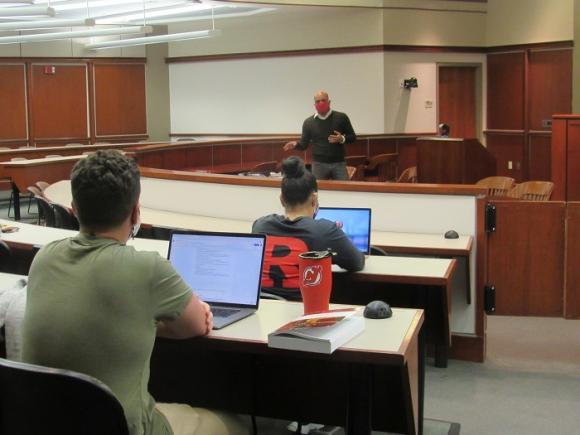Raise Your Legal Experiment Cutting-edge Trial Presentations: Ideal Practices and Advice
Raise Your Legal Experiment Cutting-edge Trial Presentations: Ideal Practices and Advice
Blog Article
Navigating the Intricacies of Trial Presentations: Tips for Seamless Shipment and Engaging Debates
In the realm of legal procedures, the art of test discussion stands as a critical determinant of success. The complexities fundamental in trial presentations need a fragile equilibrium of approach, skill, and ability.

Comprehending Test Purposes
To efficiently browse a trial, it is critical to have a clear understanding of the goals that need to be attained. Prior to entering the courtroom, legal teams should define their goals and preferred end results. These purposes function as guiding principles throughout the trial, shaping techniques and influencing decision-making processes.
Comprehending trial goals includes a detailed evaluation of the situation, lawful criteria, and the client's benefits. Trial Presentations. It needs a careful assessment of the truths, determining crucial problems, and expecting prospective difficulties. By setting quantifiable and details objectives, lawyers can tailor their arguments and presentations to line up with the preferred results
Moreover, a clear grip of test goals allows legal groups to focus on evidence, witnesses, and lawful debates successfully. It enables the development of a systematic story that resonates with the discretionary, strengthening the overall instance presentation.

Organizing Proof Properly
Having a clear understanding of test objectives lays the structure for organizing proof efficiently in lawful procedures. By aligning the discussion of evidence with the preferred outcomes of the test, legal teams can reinforce their disagreements and enhance their persuasiveness.
One more crucial element in organizing proof efficiently is developing a logical circulation. Presenting evidence in a consecutive and coherent way can help develop an engaging narrative that sustains the lawful arguments being made. In addition, using visual help such as timelines, charts, or graphs can additionally boost the organization of evidence and aid in clarifying complicated partnerships or series of events.
Moreover, making certain that all evidence provided is permissible and pertinent to the situation is crucial. Inadmissible or pointless proof can diminish the strength of the argument and potentially hurt the reputation of the here and now party. A thorough review and selection procedure should be undertaken to include just the most impactful and legally audio proof in the test presentation.
Crafting Convincing Narratives
Crafting compelling narratives plays a pivotal duty in providing influential disagreements during lawful proceedings. When creating a narrative for a test presentation, it is crucial to establish a clear story that highlights essential factors and links them in a systematic way. By weaving with each Extra resources other evidence, testament, and legal debates into a natural and persuasive narrative, lawful professionals can properly advocate for their customers and increase the probability of a favorable result in the court room.
Grasping Aesthetic Help
Effective usage of aesthetic aids is essential to boosting the impact and clearness of test discussions. Visual aids, when used purposefully, have the power to simplify complicated details, reinforce bottom lines, and leave a long-term impression on the judge and jury. To understand aesthetic help in trial presentations, it is Related Site vital to make certain that they are clear, concise, and relevant to the disagreements being made.
When integrating aesthetic help, such as graphes, timelines, photos, or charts, right into a test discussion, it is essential to keep them visually appealing yet professional. The visuals ought to match the verbal disagreements, offering a graph of the info being gone over without overwhelming the audience with unnecessary details.
Furthermore, experimenting the visual aids ahead of time is vital to make sure a seamless shipment during the test. Acquainting oneself with the web content, shifts, and timings of each visual aid can aid keep the circulation of the presentation and avoid technical problems that might develop.
Providing Impactful Closing Arguments
A compelling closing debate serves as the conclusion of a test discussion, encapsulating the core story and encouraging the judge and court towards a desirable decision. Begin by outlining the primary debates news that sustain your customer's setting, emphasizing why the proof presented throughout the test sustains your story.
Moreover, incorporating emotional charm can additionally reinforce your closing debate. Ultimately, a well-crafted closing argument should leave a long lasting perception, compelling the judge and jury to rule in your client's favor.
Final Thought
In final thought, grasping test discussions includes comprehending goals, arranging evidence, crafting narratives, using visual aids, and delivering impactful closing arguments. By implementing these techniques efficiently, lawyers can present their case seamlessly and make engaging debates in the court. It is vital to browse the complexities of trial discussions with accuracy and ability to achieve success in legal process.
By straightening the discussion of evidence with the desired end results of the test, legal teams can reinforce their disagreements and enhance their persuasiveness (Trial Presentations). To master aesthetic help in trial discussions, it is vital to make sure that they are clear, concise, and relevant to the debates being made
A compelling closing argument offers as the conclusion of a trial discussion, encapsulating the core story and convincing the judge and court towards a favorable choice. Begin by describing the major disagreements that support your customer's position, stressing why the evidence presented throughout the test supports your story.In conclusion, understanding test presentations involves comprehending objectives, arranging evidence, crafting narratives, utilizing visual help, and providing impactful closing debates.
Report this page